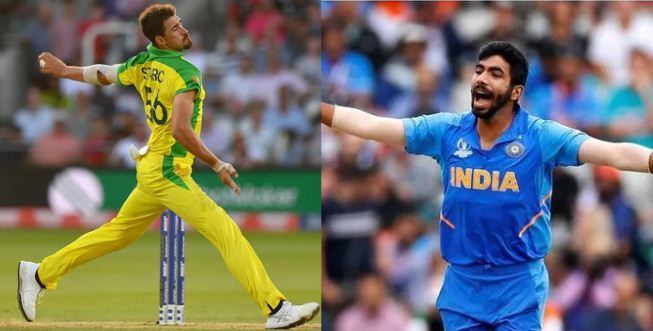Pace bowling is believed to be the peak of human capacity. A pacer’s knee has to be strong enough to tolerate anything between 10 to 15 times of their body weight. A sad reality is that it is slowly becoming a lost art.
Decelerating speeds in Pace bowlers
You must have watched the recent India-South Africa test series. The pitches in South Africa are supportive of fast bowling, so naturally, you would expect bowlers to increase their speed. But, that was not the case. Except for Jasprit Bumrah, no bowler felt like it’s necessary to increase their pace.
Kagiso Rabada, once known for uprooting Andre Russell with 150km/hour Yorkers; was bowling in the mid-130s. Marco Jansen, an almost 7ft tall bowler bowled regularly within 125-135km/hour bracket. Similarly, Duanne Olivier, Mohammed Shami and Lungi Ngidi were not up to the mark as well. One was left to ponder, what has happened to pace bowling? Well, there are multitudes of reasons behind this decline.
WORKLOAD
Fast bowling is tough. It requires much more rigour and discipline to master this art. One needs to be supremely fit; have a solid upper body, fat-free shoulders, and stiff base to be able to deliver a red cherry at more than 140km/hour. Moreover, maintaining it throughout the year makes it doubly difficult.
Read more: Why do so many Indians love and respect Brett Lee?
Bowlers of the modern era have to apply trade in all three formats of the game. They have to play cricket throughout the year. Add to that, a load of bowling in T20 leagues. It takes a toll on their bodies and bowlers tend to get frustrated and tired. To enhance the length of their career, they prefer accuracy over speed.
Hostile Pitch for Bowlers
Pitches are not what they used to be. Even countries that are known for producing fast and bouncy wickets are now producing flat wickets. Australia, the hub of pace attacks has now two grounds famous for providing spin-friendly wickets; Melbourne Cricket Ground and Sydney Cricket Ground.
The commercialisation of Cricket is the main reason behind it. Boards need more money, and audiences pay hefty amounts to watch fours and sixes. In order to provide the entertainment, Pacey pitches need to be curtailed. Pace bowlers’ role has largely been limited to utilising the first few overs of swing. During the rest of the match, batsmen just need to line up the bowlers to deform their bowling figures.
Batsmen friendly rules
Modern rules are designed to crush pace bowlers’ spirit. A pacer cannot bowl more than one bouncer in an over.
The bouncer is an essential element of the pacer’s armoury. Through this, he pushes batsmen on back-foot; which later weakens his front-foot movement, resulting in dismissals.
Read more: Dale Steyn: The greatest pace bowler of the 21st century
Similarly, over-stepping is punished with a free hit. Run-up going wayward is an essential element of pace bowler’s training. Now, they are being trained for better front-foot control during their teenage years. This leads to a loss of 10-20 percent of bowlers’ natural pace.
There was a time when batsmen needed such protective rules for themselves. Bowlers sometimes used to go haywire in their aggression. In the Pre-helmet era, there have been career-threatening injuries. Even in the helmet era, the unfortunate death of Phillip Hughes was a cause of concern. But, now batsmen are overprotected with safety. In this era, it does not make sense to stop bowlers from applying their trade.
Read more: Mitchell Johnson – Truly a Once in a Generation Spitfire
Bowlers decrease their speed to elongate their careers
The dearth of pace-bowling support systems has led to an overall decrease in speed. In spite of that, there are players like Mitchell Starc, Mark Wood, Jofra Archer, Lockie Fergusson, Jasprit Bumrah; who are passionate about their skills. Some others like Pat Cummins, Stuart Broad, and Kemar Roach have compromised on their pace to elongate their career.
The legacy built by pace bowlers of the West Indies, Australia, and South Africa is dying a slow death. Modern pacers no longer have Malcolm Marshall, Andy Roberts, Brett Lee, Javagal Srinath, etc. to look forward to. The raw pace is the essence of the game. It needs to be preserved and pass on to the next generations.

































